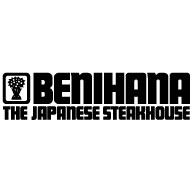 Forget for a moment that the late Hiroaki "Rocky" Aoki was a heavy-drinking playboy who once boasted of impregnating three different women at the same time. Forget that his Benihana empire turned his family into some Japanese-American version of Akira Kurosawa's Ran. And try, too, to forget that trademark jheri-curled head of his.
Forget for a moment that the late Hiroaki "Rocky" Aoki was a heavy-drinking playboy who once boasted of impregnating three different women at the same time. Forget that his Benihana empire turned his family into some Japanese-American version of Akira Kurosawa's Ran. And try, too, to forget that trademark jheri-curled head of his.
Rocky Aoki helped change the way America looked at Asian food and, in his own special way, how Americans dined.
The cultural confusion displayed in this commercial shows us just how far we, for the most part, have come in our acceptance of "Oriental" Cuisine-- a term which now seems quaint, even racist. Before Mr. Aoki opened the first Benihana Restaurant in New York City in 1964, "Oriental" food meant, to most Americans, chop suey and fortune cookies-- both, incidentally, American inventions.
Despite its Japanese trappings, Benihana is a distinctly American restaurant. Named for Mr. Aoki's parents' coffee shop, which was itself named after a little red flower discovered surviving the fire-bombing of their Tokyo neighborhood, the concept behind the new, Japanese-style dining-experience was brilliant.